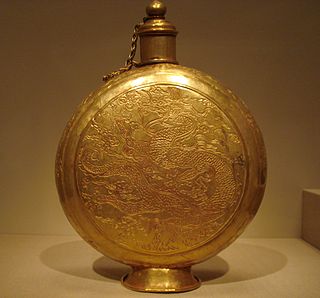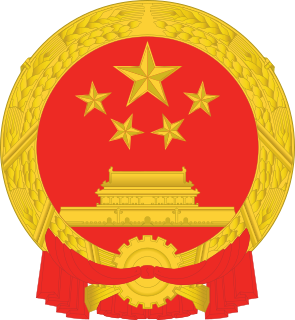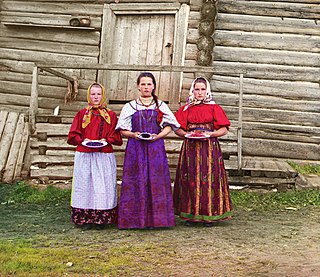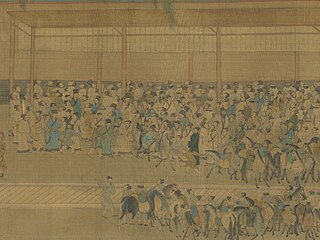
The earliest known written records of the history of China date from as early as 1250 BC, from the Shang dynasty, during the king Wu Ding's reign, who was recorded as the twenty-first Shang king by the written records of Shang dynasty unearthed. Ancient historical texts such as the Records of the Grand Historian and the Bamboo Annals describe a Xia dynasty before the Shang, but no writing is known from the period, and Shang writings do not indicate the existence of the Xia. The Shang ruled in the Yellow River valley, which is commonly held to be the cradle of Chinese civilization. However, Neolithic civilizations originated at various cultural centers along both the Yellow River and Yangtze River. These Yellow River and Yangtze civilizations arose millennia before the Shang. With thousands of years of continuous history, China is one of the world's oldest civilizations, and is regarded as one of the cradles of civilization.

The Qing dynasty, officially the Great Qing, was the last imperial dynasty of China. It was established in 1636, and ruled China proper from 1644 to 1912. It was preceded by the Ming dynasty and succeeded by the Republic of China. The Qing multi-cultural empire lasted for almost three centuries and formed the territorial base for modern China. It was the fifth largest empire in world history. The dynasty was founded by the Manchu Aisin Gioro clan in Manchuria. In the late sixteenth century, Nurhaci, originally a Ming Jianzhou Guard vassal, began organizing "Banners", military-social units that included Manchu, Han, and Mongol elements. Nurhaci formed the Manchu clans into a unified entity. By 1636, his son Hong Taiji began driving Ming forces out of the Liaodong Peninsula and declared a new dynasty, the Qing.

The Ming dynasty was the ruling dynasty of China – then known as the Great Ming Empire – for 276 years (1368–1644) following the collapse of the Mongol-led Yuan dynasty. The Ming dynasty was the last imperial dynasty in China ruled by ethnic Han Chinese. Although the primary capital of Beijing fell in 1644 to a rebellion led by Li Zicheng, regimes loyal to the Ming throne – collectively called the Southern Ming – survived until 1683.

The Song dynasty was an era of Chinese history that began in 960 and lasted until 1279. The dynasty was founded by Emperor Taizu of Song following his usurpation of the throne of the Later Zhou, ending the Five Dynasties and Ten Kingdoms period. The Song often came into conflict with the contemporary Liao and Western Xia dynasties in the north. It was eventually conquered by the Mongol-led Yuan dynasty. The Song government was the first in world history to issue banknotes or true paper money nationally and the first Chinese government to establish a permanent standing navy. This dynasty also saw the first known use of gunpowder, as well as the first discernment of true north using a compass.

The Hongwu Emperor, personal name Zhu Yuanzhang, was the founding emperor of the Ming dynasty.

The term "landed gentry", or "gentry", originally used for Britain, does not correspond to any single term in Chinese. One standard work remarks that under the Ming dynasty, the elite who held privileged status through passing the Imperial exams were called shenshi 紳士 or jinshen 縉紳. These literati, or scholar-officials, are "loosely known in English as the Chinese gentry". Through education this elite held a virtual monopoly on office holding, and overlapped with an unofficial elite of the wealthy. After the Tang dynasty, the Song Dynasty developed the civil service exam to replace the nine-rank system which favored nobles. Under the Song dynasty, their power and influence eclipsed that of the hereditary and largely military aristocrats. They are also called 士紳 shishen "scholar gentry" or 鄉紳 xiangshen "local gentry". Attempts have been made to define them as a social class who had passed the examinations and so were eligible to hold office, as well as retired mandarins or their families and descendants. Owning land was often their way of preserving wealth.
The grand chancellor, also translated as counselor-in-chief, chancellor, chief councillor, chief minister, imperial chancellor, lieutenant chancellor and prime minister, was the highest-ranking executive official in the imperial Chinese government. The term was known by many different names throughout Chinese history, and the exact extent of the powers associated with the position fluctuated greatly, even during a particular dynasty.

Chinese ceramics show a continuous development since pre-dynastic times and are one of the most significant forms of Chinese art and ceramics globally. The first pottery was made during the Palaeolithic era. Chinese ceramics range from construction materials such as bricks and tiles, to hand-built pottery vessels fired in bonfires or kilns, to the sophisticated Chinese porcelain wares made for the imperial court and for export. Porcelain was a Chinese invention and is so identified with China that it is still called "china" in everyday English usage.
The Lifan Yuan was an agency in the government of the Qing dynasty which supervised the Qing Empire's frontier Inner Asia regions such as its Mongolian dependencies and oversaw the appointments of Ambans in Tibet.

Zhongshu Sheng, commonly translated as the Secretariat, Central Secretariat or Imperial Secretariat, was one department in the Three Departments and Six Ministries government structure officially established beginning in the Sui dynasty in the history of China. As one of the three departments, it was the main policy-formulating agency that was responsible for proposing and drafting all imperial decrees. The Song dynasty modified that tripartite division of executive agencies in the central government. Under the Song, as also under the Liao and Jin dynasties, those organs exercised much of the executive authority for the emperor.

The four occupations or "four categories of the people" was an occupation classification used in ancient China by either Confucian or Legalist scholars as far back as the late Zhou dynasty and is considered a central part of the fengjian social structure. These were the shi, the nong, the gong, and the shang . The four occupations were not always arranged in this order. The four categories were not socioeconomic classes; wealth and standing did not correspond to these categories, nor were they hereditary.

The Ming dynasty, officially the Great Ming or Empire of the Great Ming, founded by the peasant rebel leader Zhu Yuanzhang, known as the Hongwu Emperor, was an imperial dynasty of China. It was the successor to the Yuan dynasty and the predecessor of the short-lived Shun dynasty, which was in turn succeeded by the Qing dynasty. At its height, the Ming dynasty had a population of 160 million people, while some assert the population could actually have been as large as 200 million.

The Yuan dynasty, officially the Great Yuan, was the empire or ruling dynasty of China established by Kublai Khan, leader of the Mongolian Borjigin clan. It followed the Song dynasty and preceded the Ming dynasty. Although the Mongols had ruled territories including modern-day North China for decades, it was not until 1271 that Kublai Khan officially proclaimed the dynasty in the traditional Chinese style, and the conquest was not complete until 1279. His realm was, by this point, isolated from the other khanates and controlled most of modern-day China and its surrounding areas, including modern Mongolia. It was the first foreign dynasty to rule all of China and lasted until 1368, after which the rebuked Genghisid rulers retreated to their Mongolian homeland and continued to rule the Northern Yuan dynasty. Some of the Mongolian Emperors of the Yuan mastered the Chinese language, while others only used their native language and the 'Phags-pa script.
The distinction between Huá and Yí, also known as Sino–barbarian dichotomy, is an ancient Chinese concept that differentiated a culturally defined "China" from cultural or ethnic outsiders. Although Yí is often translated as "barbarian", other translations of this term in English include "foreigners", "ordinary others" "wild tribes", and "uncivilized tribes". The Hua–Yi distinction asserted Chinese superiority, but implied that outsiders could become Hua by adopting Chinese values and customs.

The economy of the Ming dynasty (1368–1644) of China was the largest in the world during that period. It is regarded as one of China's three golden ages. The period was marked by the increasing political influence of the merchants, the gradual weakening of imperial rule, and technological advances.

The economic history of China covers thousands of years and the region has undergone alternating cycles of prosperity and decline. China, for last two millennia, was one of the world's largest and most advanced economies. Economic historians usually divide China's history into three periods: the pre-imperial era before the rise of Qin; the early imperial era from Qin to the rise of the Song ; and the late imperial era, from Song to the fall of the Qing.
The Yuan dynasty was the ruling dynasty of China and Mongolia established by Kublai Khan and a khanate of the Mongol Empire.
The Imperial Clan Court or Court of the Imperial Clan was an institution responsible for all matters pertaining to the imperial family under the Ming and Qing dynasties of imperial China.

The Da Ming Baochao was a series of banknotes issued during the Ming dynasty in China. They were first issued in 1375 under the Hongwu Emperor. According to the Ch'uan Pu T'ung Chih an estimated sixty different Ming dynasty notes issued, however the actual number may have been higher. Although initially the Da Ming Baochao paper money was successful, the fact that it was a fiat currency and that the government largely stopped accepting these notes caused the people to lose faith in them as a valid currency causing the price of silver relative to paper money to increase to the point that by the mid 1400s 1000 guàn of paper money was needed to pay for only an ounce of silver. The negative experiences with inflation that the Ming dynasty had witnessed signaled the Manchus to not repeat this mistake until the first Chinese banknotes after almost 400 years were issued again in response to the Taiping Rebellion under the Qing dynasty's Xianfeng Emperor during the mid-19th century.


























